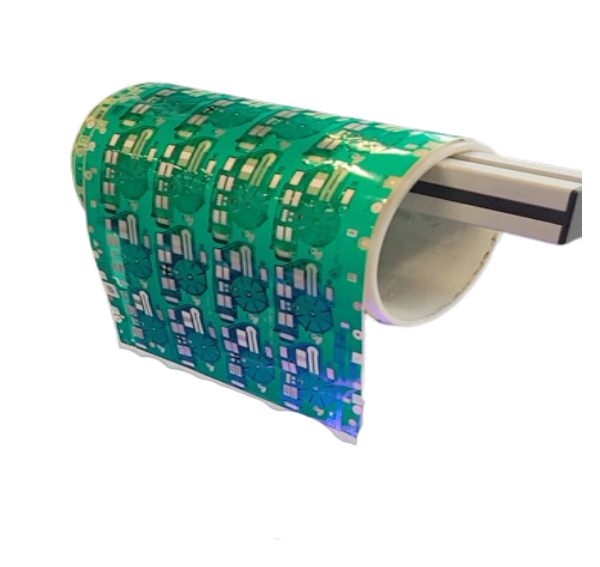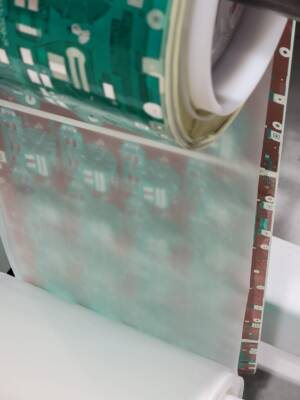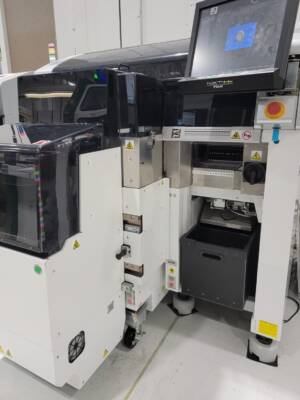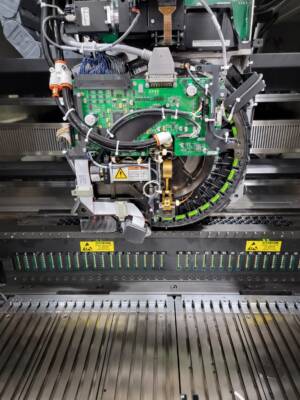Flexible Circuit Assembly
Flexible circuits are thin, lightweight, and compact devices that are gaining traction in many markets. This is mainly because electrical and electronic devices or parts are miniature sized or fitted in compact spaces. This trend is already a game changer and is estimated to last for the long term. We, at Automated Assembly, have developed roll-to-roll assembly, SMT-Flex™, that offers us a competitive edge in this market segment. Automated Assembly Corporation™ is the first company to manufacture SMT Flex™ in roll-to-roll format for both mid to high-volume production runs, and also utilizing smaller volumes to meet our customers’ needs.

Beneficial Features of Our Flexible Circuit Assembly
Flexible circuits are just as robust as PCBs and can handle the thermal shock of an automotive brake system. We have worked with many SMT components and offer custom flex assembly that suits your exact application requirements. Here are some beneficial features of our flexible circuit assemblies.
- Flexibility: While most times, a standard flexible circuit assembly is done on polyimide, polyester and PEN based films, we offer next generation flex technology, Wire-Write™, that allows processing on paper, cloth, vinyl, and so on. Aside from this material flexibility, our Wire-Write™ assembly is customizable and can conform to various shapes and contours. It can be bent, twisted, and folded without compromising performance, making it ideal for space-constrained environments and complex designs.
- Automation: We use a high level of automation in our manufacturing techniques. At Automated Assembly Corporation™ your flexible circuits are assembled using SMT Flex™ technology utilizing our high-speed automated placements. All our automation is optically guided and we write the code in-house.
- High-Density Interconnections: We assemble flexible assemblies for small-sized products with multiple functionalities. We can achieve this by ensuring high-density interconnects using advanced manufacturing techniques. This prevents signal losses and improves electrical performance.
- Durability: flexible circuit assemblies are highly durable and resistant to shocks, vibration, and harsh environmental parameters. It remains structurally stable in any harsh environment or mechanical stress, without compromising on performance.
- Weight: flexible circuits are lightweight, which means they do not add excess weight to the product. Hence, they are preferred in crucial applications in aerospace, defense, automotive, and so on, where weight reduction is a crucial factor.
- EMI Shielding: We offer flexible shields to prevent electromagnetic interference in our flexible circuit assembly. These shields offer protection to sensitive electronic components from any noise or EMI.
Highlights of Our Services
Roll to Roll SMT-Flex™ Manufacturing:
We use fully automated roll-to-roll assembly lines. We have automated process for manufacturing flex circuits which includes, AOI, robotic assembly, lamination, jetting, digital printing, 2D matrix tracking.

Flip Chip on Flexible Circuits:
We offer Flip-Chip on Flex assemblies. Our advanced wafer processing can handle up to 25 wafers on a single assembly. Whether it is Flip Chip or Pads Down, our automation can handle wafer processing at high speed.

Flexible Circuit Assembly - Pick & Place:
Our latest-generation pick & place equipment uses linear motors for the highest accuracy and repeatability. Every component is optically inspected for correct size, shape, and bent leads before placement. Our standard lines place virtually every SMT component available. We also use pick and place machines for special processes such as pin-in paste and flip chip.

Benefits of Partnering with us for Your Flexible Circuit Assembly Requirements
We offer custom flex assembly options across industrial applications and there are many benefits of partnering with us. Here are some of them.
- Custom options: We offer custom options in terms of materials, shape, size, flexibility, components, and more. This helps us cater to specific requirements efficiently.
- Quality, testing, and inspection: We are focused on quality and meeting the exact requirements of our clients. Hence, we have rigorous testing and inspection procedures such as AOI in place, while we also perform visual inspection at each stage.
- Cost-effectiveness: Our roll-to-roll assembly techniques are automated reducing labor and manual operations. All of these factors and more make our flexible circuit assembly economical in the long run.
- Quick turnaround times: We have achieved a pattern of timely deliveries without compromising on quality because we know how important it is in today’s fast-paced market environment. All of this can be attributed to our team of engineers, investment in automation processes, and more.
- Limited space availability: flexible circuit assemblies can be used in extremely small parts of vehicles such as locking systems of doors and windows and even some engine parts. They also find applications in small-sized medical devices such as glucometers, respiratory equipment parts, and more.
Lightweight assembly: flex assembly are lightweight and hence are used in aerospace, defense segments, and in aircraft parts, navigation systems, tubular components with small diameters, surveillance systems, and more. Being lightweight, these assemblies also find applications in portable consumer electronics devices.
Application Areas of Flexible Circuit Assembly
The use of flex circuits encompasses almost all major industries. Here are some application areas.
- Electronics: Suitable for smartphones, foldable displays, tablets, and wearable devices that have space constraints.
- Medical: Used in home-based monitoring devices such as glucometers, blood pressure monitors, as well as automatic drug delivery systems, insulin pumps and respiratory equipment in hospitals, imaging equipment, and so on where biocompatibility, miniaturization, conformability to shape, and reliability are important requirements.
- Aerospace: Ideal for aircraft as well as spacecraft parts, navigation systems, on-ground surveillance systems, and so on, where reliability, bendability, and weight reduction are paramount.
- Defense: Used in communication and missile systems, unmanned aerial vehicles (UAVs), electronic warfare (EW), military wearables, radar systems, ground vehicles, surveillance and reconnaissance and underwater systems where weight and space savings, vibration and shock resistance, temperature tolerance, and signal integrity are paramount.
- Automotive: Suited for engine parts, lighting systems, infotainment systems, navigation systems, and more where compact designs, and vibration and shock resistance are important.
If you require a custom flex assembly for your product or any mission critical application such as in defense, aerospace, medical, automobile, and more, we will be happy to help. Assembling flexible circuits is a complex task requiring a specialized skillset and technical expertise. This is our forte, and hence we can cater to high levels of custom options and complex requirements. We have state-of-the-art automation equipment and a facility which enables us to meet any of these requirements with ease. Automated Assembly Corporation™ specializes in assembling flexible circuits which have been used in RFID, Medical, Automotive, LED, pharmaceuticals, and other crucial sectors. Feel free to reach us on phone or email in case you have any further questions or would like to share your application requirements.
Get In touch With Automated Assembly Corporation™
Start your contract manufacturing journey with Automated Assembly® today. Simply fill out your details and we'll get in touch with you to discuss your manufacturing needs.
